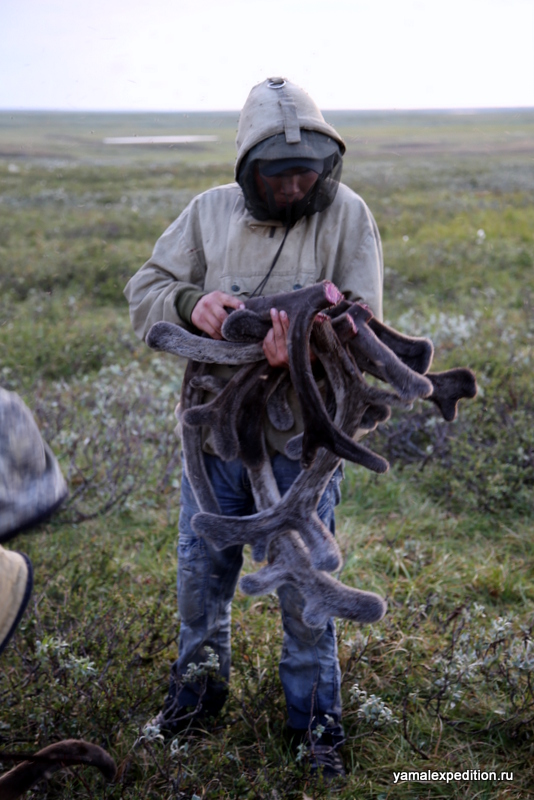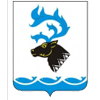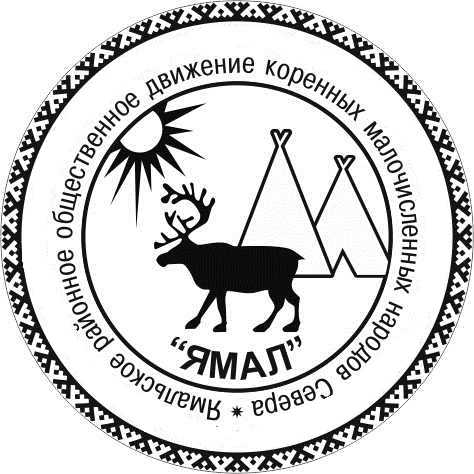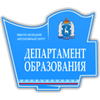Hello everyone! This time we are publishing just a few pictures of our life here in tundra - more will come in the beginning of September. We are planning to visit Salekhard and appear with more visual updates.
On July 11th we arrived at our 29th encampment: N 70º09'26,8'' E 068º16'45,2''. Linear distance from the last stop - about 5 km. This time during kaslanie we joined together with one more chum and herd - this of Vladimir Hudi. His herd's male reindeers have mixed already with our families' joined herd. Recently his herd became very small, and he often stayed at one and the same place for longer time. Some of Vladimir Huid's family members go by foot with the argishes during kaslanie, and his son Alyosha is riding a snowmobile.
4 chums of our encampment:
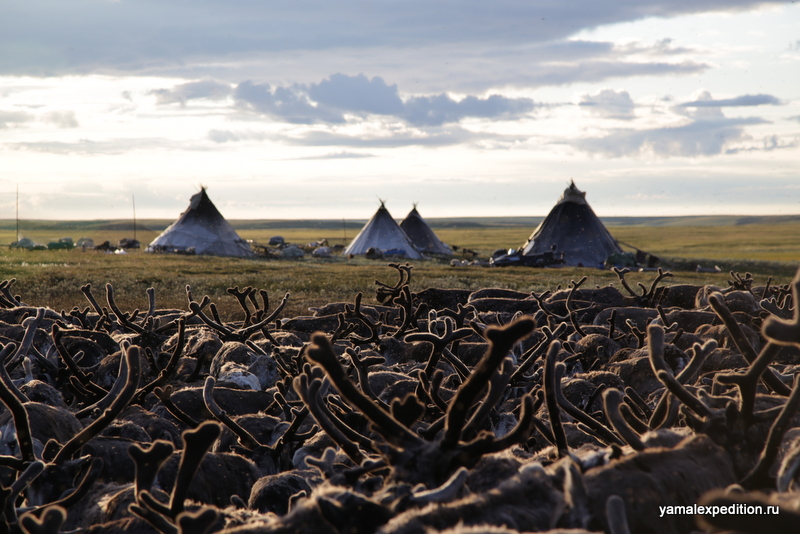
About 2 km away from our 29th encampment there is a sacred place Yalepya suty (Nenets: "Hill with thin larch-trees"). Anthropologists have never registered this sacred place before. Alexander visited it together with Segey Hudi. Similar to other sacred places of Nenets visited before, Yalepya suty looks like a small hill: on the top one can observe a pile of reindeers' horns and hardly recognizable rests of nartas. No one could tell us worship's history of this place, there were also no signs of recent visits - only a narrow path at one site.
Sacred place Yalepya suty:
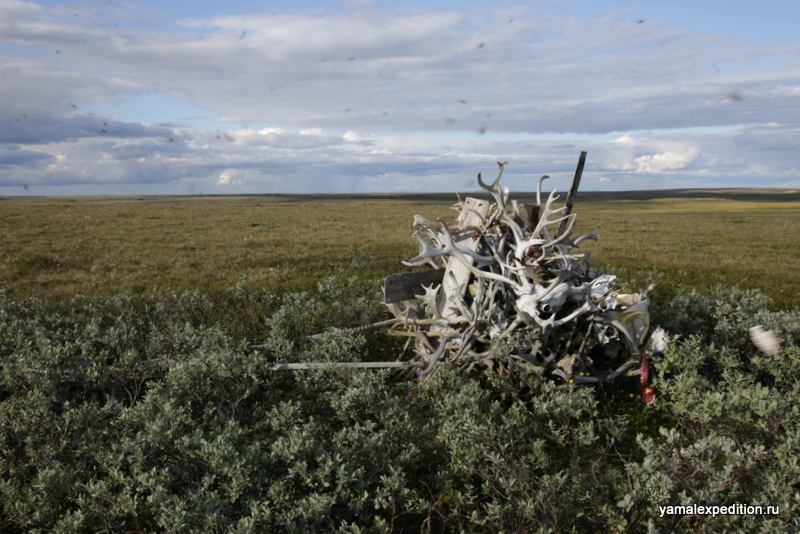
(please press "Читать полностью")
In this part of Yamal, in certain distance from Mordy-yaha river there is less fish in the summer time. Even in the lakes considered as rich on fish, this time there is no expected caught. Tired of fish shortage our men came back with several pikes - usually they are given to dogs, but now they are good for people too.
Kastya and Sasha are cleaning pikes. Women are traditionally not allowed to do such work:
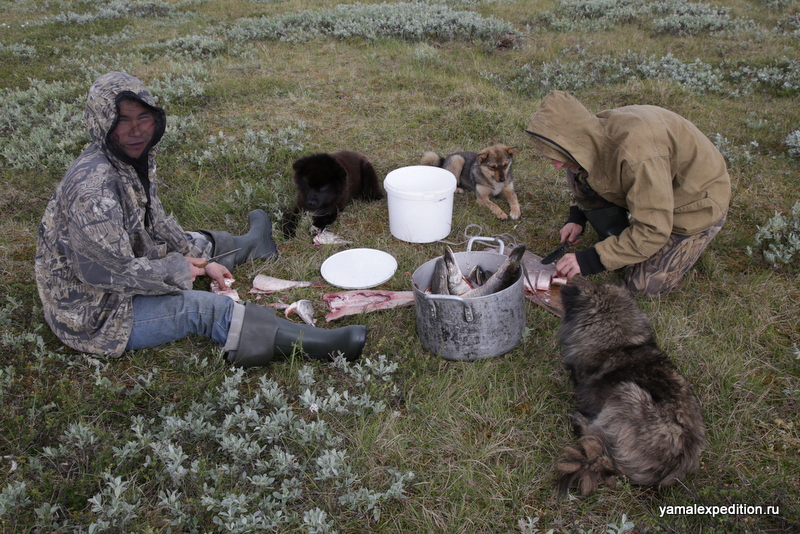
On July 14th already known to you two young fellows Pupta and Hanuta visited our encampment again. This time the reason was simple - one started collection of velvet antlers in the tundra. Velvet antlers are young unhardened reindeer horns, covered by hairs and filled with blood. They are wastly used in pharmaceutical industry, so in the certain time of the year reindeer herders dehorn reindeers and sell velvet antlers in exchange for money or goods. Prices differ depending on the place and the buyer. This year in the "left North" where we are moving with the herd, prices differ between 1200 and 1500 Rubles for 1 kilogramm.
There are several ways to deal with velvel antlers. The most common is to sell them to the "buyer's representatives" - in our case they are above mentioned Pupta and Hanuta. Some of the tundra inhabitant tries to sell the goods directly, without ony agents, bringing venvet antlers by railway to Labytnangi and selling them there for 2000 rbl/kg (we haven't no proof for this price). And this can be extremely profitable: national minorities in Yamal don't have to pay for railway and can move their baggage withour additional costs. The third way is to have direct access/sells to buyers, herders use their help to "stop" helicopters going to Bovanenkovo, directly on the encampments.
The most valuable are the youngest velvet antlers, collected in the end of Spring/beginning of Summer. This time horns are still unhardened, similar to gristle (people here eat them raw). But usually herder unhorn animals about middle of the summertime - sometimes even in September. Not all the animals in herd are unhorned - the procedure is quite painfull, and despite of possible profil most reindeer herder have mercy...Usually unhorned are bulls. Also we have to mention that the Nenets perforn castration operation to the most bulls - they call them "habt" different from uncastrated - intact - bulls - "hory". There are usually 1 hor to 15-20 reindeer does in a herd, other bulld all the habt, and they are choosen for argishes eveery time during moving. So velvet antlers are normally taken from the hors, which are planned to be castrated in Autumn, or from the old habts. One reindeer's velvet entlers weight is about 1,5 kg, and from the hers of 350-400 heads our hosts collected about 30 kg.
The unhorning was organized as followed: first all the riding bulls were all collected in a coral, then choose old habts, after that - hors. After a bull is caught, they push it down to the side and hopple (fore and back leg). Velvet antlers are cored up with a rope and the bottom, and only then one starts to unhorn - otherwise blood can flow freely and damage the animal. One have to check that blood is not flowing after the unhorning is finished: the hair of the reindeer can be used as a absorbing material (the animals are still casting their coats at the moment).
They put some fur over the wound to stop blood flow:
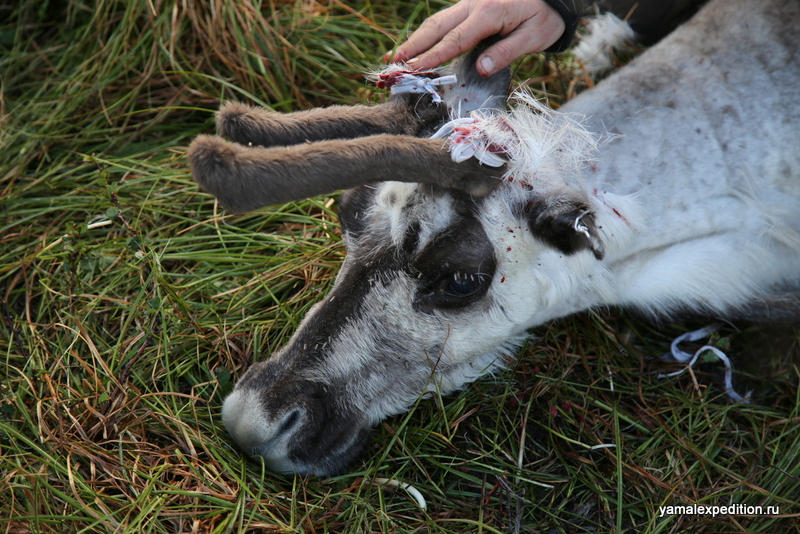
Hanuta with velvet antlers:
